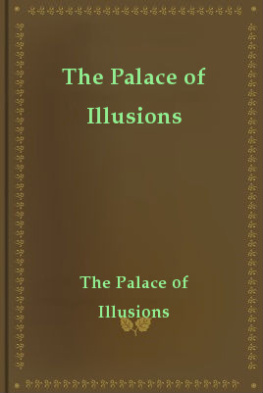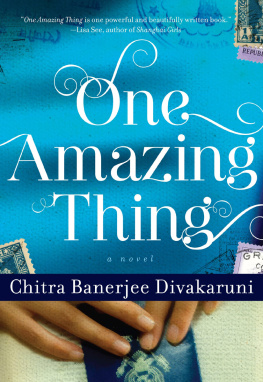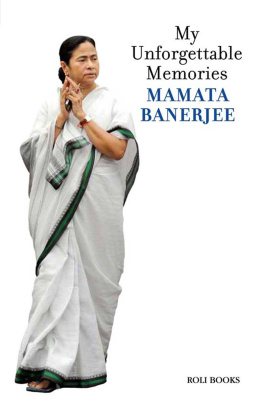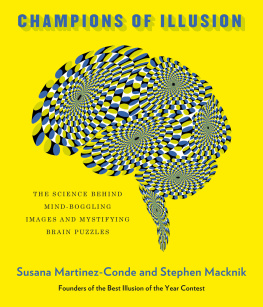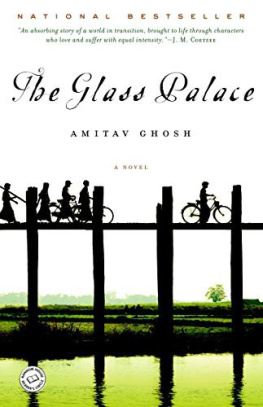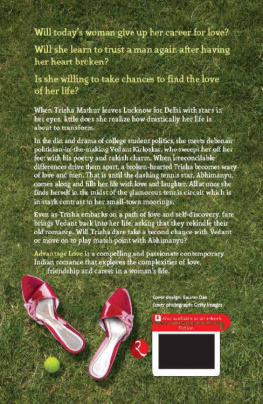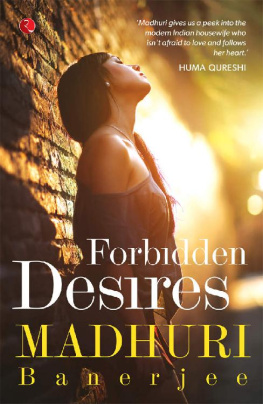Chitra Banerjee Divakaruni - Palace of Illusions
Here you can read online Chitra Banerjee Divakaruni - Palace of Illusions full text of the book (entire story) in english for free. Download pdf and epub, get meaning, cover and reviews about this ebook. year: 2009, publisher: Pan MacMillan, genre: Art. Description of the work, (preface) as well as reviews are available. Best literature library LitArk.com created for fans of good reading and offers a wide selection of genres:
Romance novel
Science fiction
Adventure
Detective
Science
History
Home and family
Prose
Art
Politics
Computer
Non-fiction
Religion
Business
Children
Humor
Choose a favorite category and find really read worthwhile books. Enjoy immersion in the world of imagination, feel the emotions of the characters or learn something new for yourself, make an fascinating discovery.
- Book:Palace of Illusions
- Author:
- Publisher:Pan MacMillan
- Genre:
- Year:2009
- Rating:4 / 5
- Favourites:Add to favourites
- Your mark:
- 80
- 1
- 2
- 3
- 4
- 5
Palace of Illusions: summary, description and annotation
We offer to read an annotation, description, summary or preface (depends on what the author of the book "Palace of Illusions" wrote himself). If you haven't found the necessary information about the book — write in the comments, we will try to find it.
Palace of Illusions — read online for free the complete book (whole text) full work
Below is the text of the book, divided by pages. System saving the place of the last page read, allows you to conveniently read the book "Palace of Illusions" online for free, without having to search again every time where you left off. Put a bookmark, and you can go to the page where you finished reading at any time.
Font size:
Interval:
Bookmark:
This book has been optimized for viewing at a monitor setting of 1024 x 768 pixels.
T h e P a l a c e
? of Illusions
a cognizant original v5 release october 10 2010
Also by Chitra Banerjee Divakaruni
Queen of Dreams
The Vine of Desire
The Unknown Errors of Our Lives
Sister of My Heart
The Mistress of Spices
Arranged Marriage
Poetry
Leaving Yuba City
Black Candle
For Young Readers
The Mirror of Fire and Dreaming
The Conch Bearer
Neela: Victory Song
Doubleday
New York London Toronto Sydney Auckland
T h e
P a l a c e
o f I l l u s i o n s
A Novel
C h i t r a l e k h a
B a n e r j e e D i v a k a r u n i
published by doubleday
Copyright 2008 by Chitra Banerjee Divakaruni All Rights Reserved
Published in the United States by Doubleday, an imprint of The Doubleday Broadway Publishing Group, a division of Random House, Inc., New York.
www.doubleday.com
doubleday and the portrayal of an anchor with a dolphin are registered trademarks of Random House, Inc.
This book is a work of fiction. Names, characters, businesses, organizations, places, events, and incidents either are the product of the authors imagination or are used fictitiously.
Any resemblance to actual persons, living or dead, events, or locales is entirely coincidental.
Book design by Maria Carella
Photo of peacock feather by Siede Preis/Photodisc/Getty Images Library of Congress Cataloging-in-Publication Data Divakaruni, Chitra Banerjee, 1956
The palace of illusions : a novel / Chitra Lekha Banerjee Divakaruni.1st ed.
p. cm.
Retelling of the Mahabharata.
1. IndiaHistoryTo 324 B.C.Fiction. I. Title.
PS3554.I86P35 2008
813'.54dc22
2007033784
eISBN: 978-0-385-52543-5
v1.0
to my three men
Abhay
Anand
Murthy
always
Who is your sister? I am she.
Who is your mother? I am she.
Day dawns the same for you and me.
From Innanas Journey to Hell,
3rd Millennium BCE,
translated from Sumerian by N. K. Sandars acknowledgments
My deepest thanks to:
My agent, Sandra Dijkstra, and my editor, Deb Futter, for guidance
Antonya Nelson and Kim Chernin
for encouragement
My mother, Tatini Banerjee, and my mother-in-law, Sita Divakaruni, for good wishes
Murthy, Anand, and Abhay for love
Baba Muktananda, Swami Chinmayananda, and Swami Vidyadhishananda for blessing.
authors note
Like many Indian children, I grew up on the vast, varied, and fascinating tales of the Mahabharat. Set at the end of what the Hindu scriptures term Dvapar Yug or the Third Age of Man (which many scholars date between 6000 BCE and 5000 BCE), a time when the lives of men and gods still intersected, the epic weaves myth, history, religion, science, philosophy, superstition, and statecraft into its innumerable stories-within-stories to create a rich and teeming world filled with psychological complexity. It moves with graceful felicity between the very recognizable human world and magical realms where yakshas and apsaras roam, depicting these with such exquisite surety that I would often wonder if indeed there was more to existence than what logic and my senses could grasp.
At the core of the epic lies the fierce rivalry between two branches of the Kuru dynasty, the Pandavas and the Kauravas. The lifelong struggle between the cousins for the throne of Hastinapur culminates in the bloody battle of Kurukshetra, in which most kings of that period participated and perished. But numerous other characters people the world of the Mahabharat and contribute to its magnetism and continuing relevance. These larger-than-life heroes, epitomizing inspiring virtues and deadly vices, etched many cau-tionary morals into my child-consciousness. Some of my favorites, who play prominent roles in The Palace of Illusions, are: Vyasa the xiv|
sage, at once the composer of the epic and a participant at crucial moments in the action; Krishna, beloved and inscrutable, an incarnation of Vishnu and mentor to the Pandavas; Bheeshma, the patriarch who, bound by his promise to protect the Kuru throne, must fight against his beloved grandsons; Drona, the brahmin-warrior who becomes teacher to both the Kaurava and Pandava princes; Drupad, the king of Panchaal, whose desire for vengeance against Drona activates the wheel of destiny; and Karna, the great warrior, who is doomed because he does not know his parentage.
But always, listening to the stories of the Mahabharat as a young girl in the lantern-lit evenings at my grandfathers village home, or later, poring over the thousand-page leather-bound volume in my parents home in Kolkata, I was left unsatisfied by the portrayals of the women. It wasnt as though the epic didnt have powerful, complex women characters that affected the action in major ways. For instance, there was the widowed Kunti, mother of the Pandavas, who dedicates her life to making sure her sons became kings. There was Gandhari, wife of the sightless Kaurava king, who chooses to blindfold herself at marriage, thus relinquishing her power as queen and mother. And most of all, there was Panchaali (also known as Draupadi), King Drupads beautiful daughter, who has the unique distinction of being married to five men at the same timethe five Pandava brothers, the greatest heroes of their time. Panchaali who, some might argue, by her headstrong actions helps to bring about the destruction of the Third Age of Man. But in some way, they remained shadowy figures, their thoughts and motives mysterious, their emotions portrayed only when they affected the lives of the male heroes, their roles ultimately subservient to those of their fathers or husbands, brothers or sons.
If I ever wrote a book, I remember thinking (though at that time I didnt really believe this would ever happen), I would place
|xv
the women in the forefront of the action. I would uncover the story that lay invisible between the lines of the mens exploits. Better still, I would have one of them tell it herself, with all her joys and doubts, her struggles and her triumphs, her heartbreaks, her achievements, the unique female way in which she sees her world and her place in it. And who could be better suited for this than Panchaali?
It is her life, her voice, her questions, and her vision that I invite you into in The Palace of Illusions.
? Family Chart of
Main Characters in Kuru Dynasty
(Women characters are indicated in italics) Satyavati m. Shantanu m. Ganga Ambika and Ambalika m. Vichitravirya Bheeshma
Gandhari m. Dhritarashtra (the blind king) Duryodhan, Dussasan,
and 98 other brothers
(The Kauravas)
Madri m. Pandu m. Kunti
(The Pandavas)
Nakul
Sahadev
Yudhisthir
Bheem
Arjun
m.
m.
m.
m.
m.
Panchaali Panchaali
Panchaali
Panchaali Panchaali
and m.
(one son by each husband)
Subhadra
Uttara m. Abhimanyu
Pariksit
other Major Characters
Aswatthama: Dronas son
Dhristadyumna: Brother of Panchaali (often referred to as Dhri) Drona: Teacher of warcraft for the Kaurava and Pandava princes; teacher of Dhristadyumna
Drupad: King of Panchaal, father of Panchaali (Draupadi) and her twin brother Dhristadyumna; onetime friend and now enemy of Drona
Karna: Best friend of Duryodhan and rival of Arjun; king of Anga; as an infant he was discovered floating on the Ganga river and was brought up by Adhiratha the chariot driver Keechak: Sudeshnas brother and commander of the Matsya army Krishna: Incarnation of the god Vishnu; ruler of the Yadu clan; mentor to the Pandavas and Arjuns best friend; dear friend to Panchaali; brother of Subhadra, who marries Arjun Sudeshna: Virats queen; Uttaras mother Virat: Aged king of Matsya; Uttaras father Vidur: Chief minister of Dhritarashtra and friend to the orphaned Pandavas
Next pageFont size:
Interval:
Bookmark:
Similar books «Palace of Illusions»
Look at similar books to Palace of Illusions. We have selected literature similar in name and meaning in the hope of providing readers with more options to find new, interesting, not yet read works.
Discussion, reviews of the book Palace of Illusions and just readers' own opinions. Leave your comments, write what you think about the work, its meaning or the main characters. Specify what exactly you liked and what you didn't like, and why you think so.

